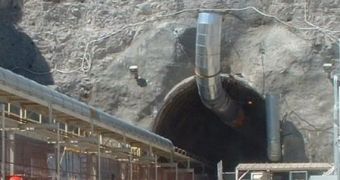On Tuesday, the US Nuclear Regulatory Commission (NRC) approved a set of rules that determined the maximum amount of radiation allowed at the Yucca Mountain nuclear disposal site complex for the next 1 million years, although planning so far ahead may seem pointless to some. The current allowed radiation limits were set in compliance with proposals coming from the US Environmental Protection Agency (EPA), which was strict about the maximum allowed limits for the first 10,000 years.
According to the new regulations, the site will have to record a maximum of 15 millirem readings for the first 10,000 years of functioning, starting when the next batches of depleted nuclear fuel will make their way to the Nevada Test Site in Nye County, Nevada. The place is located just 80 miles Northwest of the Los Angeles metropolitan area, which in the past drew criticism as to the scale of the project. For the 10,000 to 1 million-year interval, the EPA and the NRC agreed on a 100 millirem limit for radiation levels.
It was fully necessary to find a place to store depleted fuel, as building another fill would have taken over a decade to complete, during which time the current repository would have been overrun. It was only on September 8th, 2008, that the Department of Energy (DOE), the owner of the site, got a preliminary permit from the NRC, but there is still no chance of the Yucca site opening any time soon.
In fact, DOE officials say that the repository will most likely be opened sometime after 2020, a good two decades after the proposed time line. The idea of a national landfill for nuclear materials at Yucca was passed by the Congress as far back as 1982, and plans stated that the project was to be completed by 1998. Still, that turned out to be impossible, and costs skyrocketed from $57.5 billion in 2001 to $96 billion in 2008. In the past, there were legal disputes on whether the project was underfunded, but this type of protests is over now.
Over the next three to four years, the NRC will be reviewing DOE's proposals, and is due to give its final verdict by 2012-2013. After that, there will still be 6 to 8 years until the actual construction is completed. Until then, depleted nuclear fuel is bound to be stored at other locations, which are not as safe as Yucca would have been, had it been completed on schedule.

 14 DAY TRIAL //
14 DAY TRIAL //